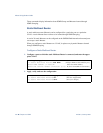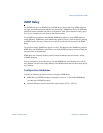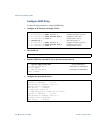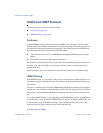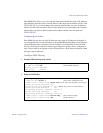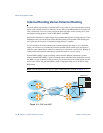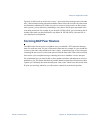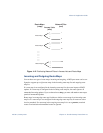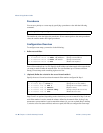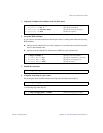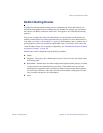
Alteon OS Application Guide
172
Chapter 11: Border Gateway Protocol 42C4911, January 2007
Internal Routing Versus External Routing
To ensure effective processing of network traffic, every router on your network needs to know
how to send a packet (directly or indirectly) to any other location/destination in your network.
This is referred to as internal routing and can be done with static routes or using active, inter-
nal dynamic routing protocols, such as RIP, RIPv2, and OSPF.
Static routes should have a higher degree of precedence than dynamic routing protocols. If the
destination route is not in the route cache, then the packets are forwarded to the default gate-
way which may be incorrect if a dynamic routing protocol is enabled.
It is also useful to tell routers outside your network (upstream providers or peers) about the
routes you can access in your network. External networks (those outside your own) that are
under the same administrative control are referred to as autonomous systems (AS). Sharing of
routing information between autonomous systems is known as external routing.
External BGP (eBGP) is used to exchange routes between different autonomous systems
whereas internal BGP (iBGP) is used to exchange routes within the same autonomous system.
An iBGP is a type of internal routing protocol you can use to do active routing inside your net-
work. It also carries AS path information, which is important when you are an ISP or doing
BGP transit.
NOTE – The iBGP peers must be part of a fully meshed network, as shown in Figure 11-1.
Figure 11-1 iBGP and eBGP
BladeCenter
BladeCenter
Internet
Internet



